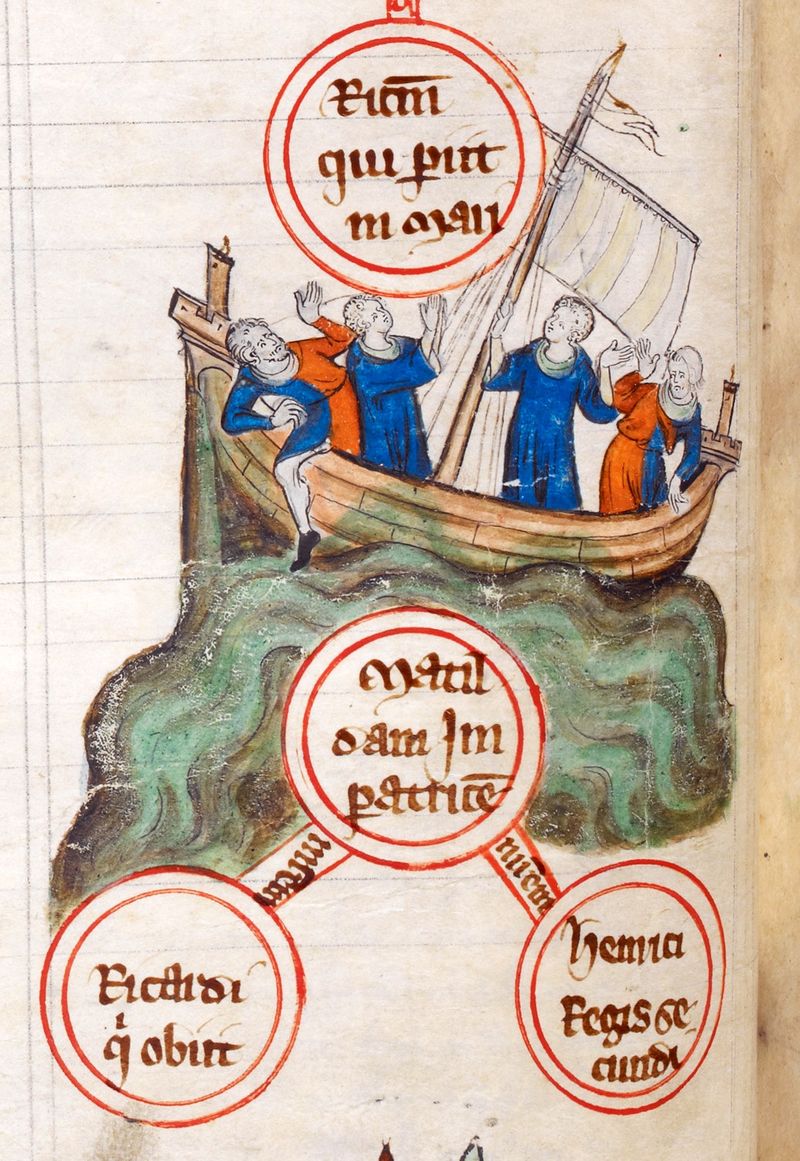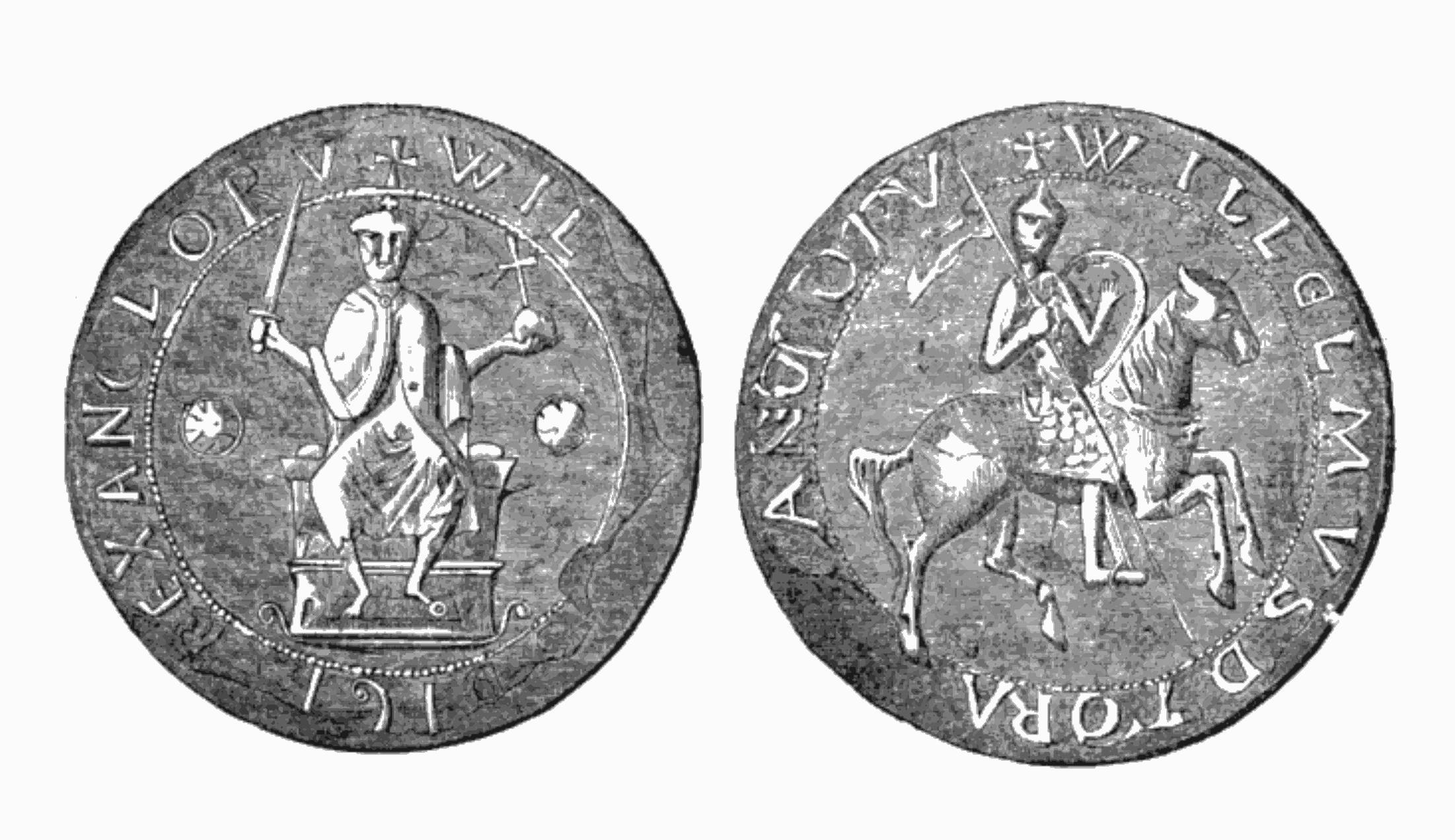|
Edith Of Scotland
Matilda of Scotland (originally christened Edith, 1080 – 1 May 1118), also known as Good Queen Maud, was Queen consort of England and Duchess of Normandy as the first wife of King Henry I. She acted as regent of England on several occasions during Henry's absences: in 1104, 1107, 1108, and 1111. Daughter of King Malcolm III of Scotland and the Anglo-Saxon princess Margaret of Wessex, Matilda was educated at a convent in southern England, where her aunt Christina was abbess and forced her to wear a veil. In 1093, Matilda was engaged to an English nobleman until her father and her brother Edward were killed in the Battle of Alnwick in 1093. Her uncle Donald III seized the throne of Scotland, triggering a messy succession conflict. England opposed King Donald and supported first her half-brother Duncan II as king of Scotland, and after his death, her brother Edgar, who assumed the throne in 1097. Henry I succeeded his brother William Rufus as king of England in 1100 and qui ... [...More Info...] [...Related Items...] OR: [Wikipedia] [Google] [Baidu] |
Queen Consort Of England
The English royal consorts listed here were the spouses of the reigning monarchs of the Kingdom of England, excluding joint rulers William III of England, William III and Mary II who reigned together in the 17th century. Most of the consorts were women, and enjoyed titles and honours pertaining to a queen consort; some few were men, whose titles were not consistent, depending upon the circumstances of their spouses' reigns. The Kingdom of England merged with the Kingdom of Scotland in 1707, to form the Kingdom of Great Britain. There have thus been no consorts of England since that date. Athelstan, Edward the Martyr, Harold Harefoot(?), Harthacnut, William II of England, William II, Edward V, Edward VI and Elizabeth I are all excluded from this list because they never married. House of Wessex, 886–1013 House of Denmark, 1013–1014 House of Wessex (restored, first time), 1014–1016 House of Denmark (restored), 1016–1042 House of Wessex (restored, second time), 10 ... [...More Info...] [...Related Items...] OR: [Wikipedia] [Google] [Baidu] |
Cristina (daughter Of Edward The Exile)
Cristina, daughter of Edward the Exile and Agatha, was the sister of Edgar Ætheling and Saint Margaret of Scotland, born in the 1040s. Cristina's nieces Edith and Mary were sent to Romsey Abbey, near Southampton, in 1086 when she was abbess. Life Cristina came to the Kingdom of England with her family in 1057, from Hungary. Along with her siblings, she went into exile in the Kingdom of Scotland, at the court of Malcolm III, her future brother-in-law. At some time before 1086, Cristina returned to England and entered the nunnery at Romsey Abbey, where she tutored her nieces Edith and Mary. Edith gave testimony to a conclave of bishops summoned by Archbishop Anselm of Canterbury to determine whether Edith could lawfully marry Henry I of England. During that enquiry she stated that she had never taken holy vows, insisting that her parents had sent her and her sister to England for educational purposes, and that her aunt Cristina had veiled her to protect her "from the lu ... [...More Info...] [...Related Items...] OR: [Wikipedia] [Google] [Baidu] |
William Adelin
William Ætheling (, ; 5 August 1103 – 25 November 1120), commonly called Adelin (sometimes ''Adelinus'', ''Adelingus'', ''A(u)delin'' or other Latinised Norman-French variants of '' Ætheling''), was the son of Henry I of England by his wife Matilda of Scotland, and was thus heir apparent to the English throne. His early death without issue caused a succession crisis, now known in English history as the Anarchy. Early life William was born in Winchester. His father, King Henry I of England, had married his mother, Matilda of Scotland, to conciliate his English subjects. Matilda was descended from Edmund Ironside and was a great-niece of Edward the Confessor; as such, the marriage represented a union between the new Norman rulers of England and the old Anglo-Saxon dynasty. Henry's hopes for his succession rested upon William, who was, according to Henry of Huntingdon, "a prince so pampered" that he seemed "destined to be food for the fire." Duke of Normandy During Henry ... [...More Info...] [...Related Items...] OR: [Wikipedia] [Google] [Baidu] |
Empress Matilda
Empress Matilda (10 September 1167), also known as Empress Maud, was one of the claimants to the English throne during the civil war known as the Anarchy. The daughter and heir of Henry I, king of England and ruler of Normandy, she went to Germany as a child when she was married to the future Holy Roman Emperor Henry V. She travelled with the emperor to Italy in 1116, was controversially crowned empress in St Peter's Basilica, and acted as the imperial regent in Italy. Matilda and Henry V had no children, and when he died in 1125, the imperial crown was claimed by his rival Lothair of Supplinburg. Matilda's younger and only full brother, William Adelin, died in the ''White Ship'' disaster of 1120, leaving Matilda's father and realm facing a potential succession crisis. Upon her widowhood in the Holy Roman Empire, Matilda was recalled to Normandy by her father, who arranged for her to marry Geoffrey of Anjou to form an alliance to protect his southern borders in Franc ... [...More Info...] [...Related Items...] OR: [Wikipedia] [Google] [Baidu] |
Charter
A charter is the grant of authority or rights, stating that the granter formally recognizes the prerogative of the recipient to exercise the rights specified. It is implicit that the granter retains superiority (or sovereignty), and that the recipient admits a limited (or inferior) status within the relationship, and it is within that sense that charters were historically granted, and it is that sense which is retained in modern usage of the term. In early medieval Britain, charters transferred land from donors to recipients. The word entered the English language from the Old French ', via -4; we might wonder whether there's a point at which it's appropriate to talk of the beginnings of French, that is, when it wa ... ', via Latin ', and ultimately from Ancient Greek">Greek (', meaning "layer of papyrus"). It has come to be synonymous with a document that sets out a grant of rights or privileges. Other usages The term is used for a special case (or as an exception) of an ... [...More Info...] [...Related Items...] OR: [Wikipedia] [Google] [Baidu] |
Health
Health has a variety of definitions, which have been used for different purposes over time. In general, it refers to physical and emotional well-being, especially that associated with normal functioning of the human body, absent of disease, pain (including mental pain), or injury. Health can be promoted by encouraging healthful activities, such as regular physical exercise and adequate sleep, and by reducing or avoiding unhealthful activities or situations, such as smoking or excessive stress. Some factors affecting health are due to individual choices, such as whether to engage in a high-risk behavior, while others are due to structural causes, such as whether the society is arranged in a way that makes it easier or harder for people to get necessary healthcare services. Still, other factors are beyond both individual and group choices, such as genetic disorders. History The meaning of health has evolved over time. In keeping with the biomedical perspective, earl ... [...More Info...] [...Related Items...] OR: [Wikipedia] [Google] [Baidu] |
Transportation
Transport (in British English) or transportation (in American English) is the intentional Motion, movement of humans, animals, and cargo, goods from one location to another. Mode of transport, Modes of transport include aviation, air, land transport, land (rail transport, rail and road transport, road), ship transport, water, cable transport, cable, pipeline transport, pipelines, and space transport, space. The field can be divided into infrastructure, vehicles, and operations. Transport enables human trade, which is essential for the development of civilizations. Transport infrastructure consists of both fixed installations, including roads, railways, airway (aviation), airways, waterways, canals, and pipeline transport, pipelines, and terminals such as airports, train station, railway stations, bus stations, warehouses, trucking terminals, refueling depots (including fuel docks and fuel stations), and seaports. Terminals may be used both for the interchange of passengers and ... [...More Info...] [...Related Items...] OR: [Wikipedia] [Google] [Baidu] |
Building Projects
A building or edifice is an enclosed structure with a roof, walls and windows, usually standing permanently in one place, such as a house or factory. Buildings come in a variety of sizes, shapes, and functions, and have been adapted throughout history for numerous factors, from building materials available, to weather conditions, land prices, ground conditions, specific uses, prestige, and aesthetic reasons. To better understand the concept, see ''Nonbuilding structure'' for contrast. Buildings serve several societal needs – occupancy, primarily as shelter from weather, security, living space, privacy, to store belongings, and to comfortably live and work. A building as a shelter represents a physical separation of the human habitat (a place of comfort and safety) from the ''outside'' (a place that may be harsh and harmful at times). buildings have been objects or canvasses of much artistic expression. In recent years, interest in sustainable planning and building pract ... [...More Info...] [...Related Items...] OR: [Wikipedia] [Google] [Baidu] |
House Of Wessex
The House of Wessex, also known as the House of Cerdic, the House of the West Saxons, the House of the Gewisse, the Cerdicings and the West Saxon dynasty, refers to the family, traditionally founded by Cerdic of the Gewisse, that ruled Wessex in Southern England from the early 6th century. The house became dominant in southern England after the accession of King Ecgberht in 802. Alfred the Great saved England from Viking conquest in the late ninth century and his grandson Æthelstan became first king of England in 927. The disastrous reign of Æthelred the Unready ended in Danish conquest in 1014. Æthelred and his son Edmund Ironside attempted to resist the Vikings in 1016, but after their deaths the Danish Cnut the Great and his sons ruled until 1042. The House of Wessex then briefly regained power under Æthelred's son Edward the Confessor, but lost it after the Confessor's reign, with the Norman Conquest in 1066. All monarchs of England (and subsequently Great Britain) sinc ... [...More Info...] [...Related Items...] OR: [Wikipedia] [Google] [Baidu] |
William Rufus
William II (; – 2 August 1100) was King of England from 26 September 1087 until his death in 1100, with powers over Normandy and influence in Scotland. He was less successful in extending control into Wales. The third son of William the Conqueror, he is commonly referred to as William Rufus (' being Latin for "the Red"), perhaps because of his ruddy appearance or, more likely, due to having red hair. William was a figure of complex temperament, capable of both bellicosity and flamboyance. He did not marry or have children, which – along with contemporary accounts – has led some historians to speculate on homosexuality or bisexuality. He died after being hit by an arrow while hunting. Circumstantial evidence in the behaviour of those around him – including his younger brother Henry I – raises strong, but unproven, suspicions of murder. Henry immediately seized the treasury and had himself crowned king. Historian Frank Barlow observed William was " rumbustious, dev ... [...More Info...] [...Related Items...] OR: [Wikipedia] [Google] [Baidu] |
Edgar, King Of Scotland
Edgar or Étgar mac Maíl Choluim ( Modern Gaelic: ''Eagar mac Mhaoil Chaluim''), nicknamed Probus, "the Valiant" (c. 1074 – 8 January 1107), was King of Alba (Scotland) from 1097 to 1107. He was the fourth son of Malcolm III and Margaret of Wessex but the first to be considered eligible for the throne after the death of his father. Reign Edgar claimed the kingship in early 1095, following the murder of his half-brother Duncan II in late 1094 by Máel Petair of Mearns, a supporter of Edgar's uncle Donald III. His older brother Edmund sided with Donald, presumably in return for an appanage and acknowledgement as the heir of the aged and son-less Donald. Edgar received limited support from William II of England as Duncan had before him; however, the English king was occupied with a revolt led by Robert de Mowbray, Earl of Northumbria, who appears to have had the support of Donald and Edmund. Rufus campaigned in northern England for much of 1095, and during this time Edga ... [...More Info...] [...Related Items...] OR: [Wikipedia] [Google] [Baidu] |
Duncan II
Donnchad mac Máel Coluim ( Modern Gaelic: ''Donnchadh mac Mhaoil Chaluim'';''Donnchad mac Maíl Coluim'' is the Mediaeval Gaelic form. anglicised as Duncan II; c. 1060 – 12 November 1094) was King of Alba. He was son of Malcolm III (Máel Coluim mac Donnchada) and his first wife Ingibiorg Finnsdottir, widow of Thorfinn Sigurdsson, earl of Orkney. Early life The identity of Duncan's mother is given by the Orkneyinga saga, which records the marriage of Malcolm and Ingibiorg, and then mentions "their son was Duncan, King of Scots, father of William". Duncan II got his name from that of his grandfather, Duncan I of Scotland. However, Ingibiorg is never mentioned by primary sources written by Scottish and English chroniclers. She might have been a concubine or had a marriage not recognized by the Church. William of Malmesbury calls Duncan an illegitimate son of Malcolm III. This account influenced a number of Medieval commentators, who also dismissed Duncan as an illegitima ... [...More Info...] [...Related Items...] OR: [Wikipedia] [Google] [Baidu] |






